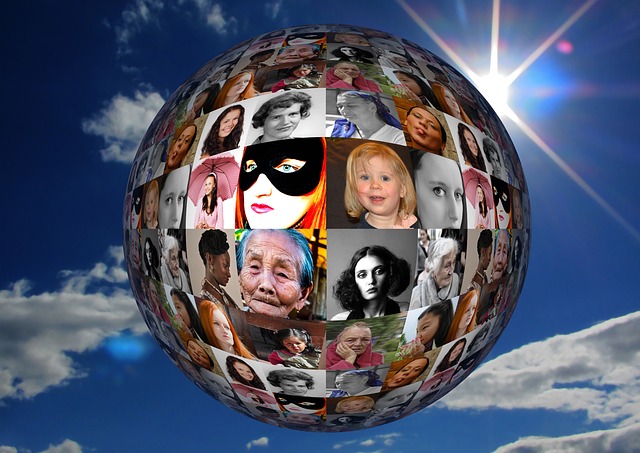
- UNCTAD report on International Women’s Day 2023 shows gender equality is achievable in digital economy
- The digital gender gap is closing fast in tech-savvy Asia Pacific, International Telecommunication Union data indicate
- UNCTAD’s report identifies three key advantages e-commerce offers women, namely, a low barrier to entry, global reach, and flexibility in work hours and location
As the world celebrates International Women’s Day 2023, the United Nations Conference on Trade and Development brings into focus the issue of gender equality, pointing out that gender parity is achievable as women prove their capabilities in the digital economy.
This is not a distant goal in tech-savvy Asia Pacific, where the digital gender gap is closing fast, International Telecommunication Union data indicate.
Hence, the UN has aptly chosen the theme “DigitALL: Innovation and technology for gender equality” for this special occasion.
An UNCTAD report published March 8 says “digital entrepreneurship can be a powerful avenue for women’s inclusion in the digital economy with new business opportunities, efficiency gains and better access to markets and global value chains”.
The report, entitled “How to unlock women’s potential in the digital economy,” was authored by Shamika N. Sirimanne, director of Technology and Logistics, UNCTAD, and Ratnakar Adhikari, executive director of Enhanced Integrated Framework.
While the digital economy is a very broad category, the International Finance Corporation says, women could add more than US$300 billion to e-commerce markets alone in Africa and Southeast Asia between 2025 and 2030.
Globally in 2020, some 62% of all men were using the Internet, compared with 57% of all women, according to the International Telecommunications Union.
In Asia Pacific, the cyber gender gap is narrower with 54% of the female population accessing the Net compared with 57% of the male population, ITU data show. Gender parity is deemed achieved when the gender parity score, defined as the female percentage divided by the male percentage, stands between 0.98 and 1.02.
In all regions, the gender Internet divide has been narrowing in recent years with the global gender parity score improving from 0.89 in 2018 to 0.92 in 2020.
Parity has been achieved in developed countries as a whole and in the Americas, and almost achieved in the Commonwealth of Independent States (former Soviet Union), the small island developing states (SIDS) and Europe.
The divide remains wide in the LDCs, where only 19% of women are using the Internet vs. 31% of men; landlocked developing countries, where the ratio is 27% women vs. 38% men; Africa, where the ratio is 24% vs. 35%, and the Arab States with 56% vs. 68%.
Of the estimated 2.7 billion people unconnected, the majority are women and girls, ITU said.
The UNCTAD report identifies three key advantages e-commerce offers women. First, it offers lower barriers to entry than traditional brick-and-mortar businesses, with women entrepreneurs being able to start their businesses with lower start-up costs and without a physical storefront, which is a significant advantage.
Sirimanne and Adhikari cited young Rwanda entrepreneur Yvette Uwimpaye, who noticed the inconvenience people faced while shopping at multiple markets and developed Murukali, a simplified online shopping platform that saves time and money. With start-up costs as little as US$1,155, she launched the platform that is transforming the shopping experience in Rwanda.
Secondly, e-commerce enables women entrepreneurs to reach customers worldwide. They can use this global reach to expand their customer base and grow their businesses beyond their local markets.
And thirdly, it offers flexibility in terms of work hours and location. Women entrepreneurs who may have caregiving responsibilities or mobility constraints can greatly benefit from digital technologies.
The report says despite these opportunities, women entrepreneurs are much less represented in the digital economy than men, translating into missed economic opportunities.
“To understand how to increase women’s participation in e-commerce and the digital economy and reduce the digital gender divide, we first need to understand the specific needs and constraints that women face as entrepreneurs, as well as the enabling factors that can further support the growth of women-led digital businesses,” the authors said.
They said meaningful connectivity needs to be accompanied by relevant skills. Women have limited opportunity than men to master more advanced technology and digital skills. According to UNESCO, only 35% of Science, Technology, Engineering and Mathematics (STEM) students in higher education globally are women.
But for many entrepreneurs in developing countries and the LDCs, it is basic digital literacy that is most needed to engage in the digital economy.
In addition to these challenges in the digital world, barriers that women entrepreneurs continue to face in the analogue world still need to be addressed. These include limited access to resources, difficulties in obtaining credit, cultural inhibitions and gender stereotypes.
There are several initiatives underway to address these challenges. UNCTAD’s E-Trade for Women initiative is promoting the engagement of women entrepreneurs in developing countries in designing relevant and effective policies to address the obstacles that women face. So far, the initiative has reached founders of almost 200 women-owned digital businesses in over 40 developing countries.
Closing the digital divide is a prerequisite to unlocking women’s potential in the digital economy, the authors said, urging governments to take steps to improve digital connectivity. In many developing countries, internet access is prohibitively expensive, making it difficult for women entrepreneurs to operate in the digital space.
RELATED READ: WCO forum discusses impact of e-commerce on Customs valuation








